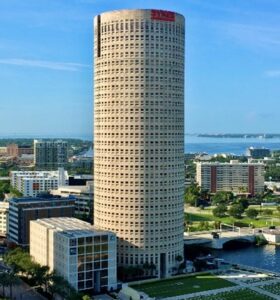Office

Tampa, Florida
While office properties have traditionally been one of the most widely sought property types for investment, the investment market for institutional quality office properties, and particularly multi-tenant properties, has become increasingly uncertain since the pandemic. Prime assets located in major gateway “24/7” markets such as New York, Washington, D.C., Chicago and Los Angeles, as well as attractive properties in significant growth markets such as South Florida and other parts of the “Sunbelt,” accounted for the majority of office property institutional investment in North America by both U.S. and international investors, commanding substantial premiums over assets located in secondary and tertiary markets. In London as well as in major European financial centers such as Frankfurt, Amsterdam, Milan, and Paris, investment in office properties expanded significantly as well, driven by continuing growth of the financial markets in the U.K. and Europe and increasing levels of cross-border property investment.

Atlanta, Georgia
The office sector is facing a period of unprecedented uncertainty. Issues of health and environmental quality; the design and utilization of facilities; and the uncertain, absolute level of demand for concentrated urban office space in centralized locations all have an impact, especially in light of changing patterns of usage. The trend for corporate employees to work from home, either full or part time, has led to downsizing and record sublease availability in U.S. cities. While newer Class A buildings have been able to attract and retain tenants, many older buildings are becoming functionally obsolete. Greater bifurcation can be expected across markets, asset classes and business sectors. And while there is much discussion regarding the possibility of redeveloping obsolete office space for alternate purposes such as residential and hotel use, in many cases this may not be possible due to physical limitations or economic feasibility. As a result, new office construction has been significantly reduced, net absorption has turned negative, vacancy rates are rising and rental concessions and inducements are increasing. As part of this challenged outlook, debt availability for the office sector has become increasingly constrained and asset values have fallen.

San Francisco, California
As markets begin to normalize over time, single-tenant corporate office properties in both urban and suburban locations that can accommodate ongoing changes in technology, environmental systems and space utilization will be favored due to a corporation’s ability to totally control all aspects of its office setting and usage. These properties can also potentially offer more outdoor space than many older office structures. Newer office buildings in urban areas are being designed to incorporate more indoor/outdoor space in climates that allow it. These assets will put increasing competitive pressure on older more traditional office buildings. Additionally, corporate office properties in non-downtown locations will be favored as they are closer to residential areas where a majority of the corporate workforce lives, thus reducing commuting time on public transportation. A consequence of the pandemic will be a heightened corporate awareness of the benefits of managing all facets of its employees’ work experience, often in more decentralized locations.

Pittsburgh, Pennsylvania
Traditionally, investors have been able to achieve attractive returns in multiple segments of the office market. In major metropolitan areas, top quality urban properties in prime locations with stable current returns and the promise of appreciation over time as well as older properties with the potential for improvement and redevelopment have offered attractive investment opportunities. Newer, first class properties in major suburban and “edge city” locations have also been attractive. The continuing evolution of office design, including both technological and operational innovations, has created further investment opportunities as new prototypes have been introduced and adopted. Multiple types of assets in the office sector offer alternative ways in which to realize value at multiple points in the investment cycle.
Prescott targets assets in primary markets as well as well-located urban and suburban properties in attractive secondary and tertiary markets, provided those markets have strong generators of continuing economic and demographic growth. These assets can represent especially appealing investment opportunities, offering the potential for enhanced current income and appreciation, provided the specific markets demonstrate attractive prospects for growth in income and employment. Prescott focuses on opportunities to acquire office properties that are available due to market dislocation or changing operating and investment strategies that can be acquired at advantageous discounted pricing levels. From an investment perspective, office assets today offer a relative value opportunity given the uncertainty of near term office demand and associated continuing downward pressure on office values as a result. If longer term prospects for an asset and its location are desirable, investment in the office sector can offer a compelling contrarian investment opportunity in the current market.
